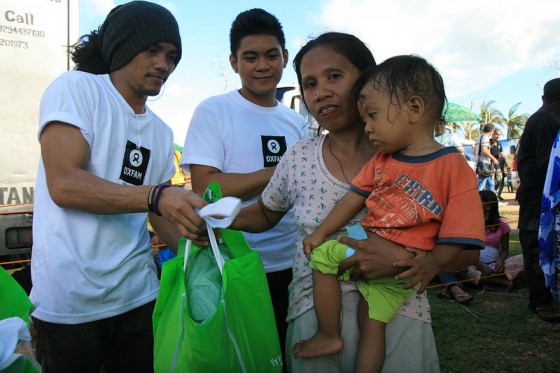After seeing the impact of hurricanes Katrina and Rita in the Gulf, relief work in the Philippines will be anything but a quick fix.
I confess that I avoided watching Typhoon Haiyan (Yolanda) coverage until now. This tragedy hits close to home.
My mother was born and raised on the island of Mindoro in the Philippines. I’ve spent several months over many years visiting the country, most recently in 2011 when I spent three months living, traveling and learning through the diverse life experiences of local people.
While my family was fortunate that none of our relatives were directly hit by the typhoon, I knew that seeing the faces behind the headlines would feel like seeing my family, friends, and the many other people that I met during my time there.
I knew that it would be emotionally difficult to watch, and leave me feeling utterly helpless. Even without seeing the footage I know that beyond the horror of the typhoon itself, the long road to recovery for those affected will also be a full of disasters, big and small.
I witnessed this first-hand working with community leaders in the Gulf Coast post-hurricanes Katrina and Rita. As soon as I heard the news of the typhoon, memories of my time in coastal Louisiana, Mississippi, and Alabama flooded me. I first visited in 2007, two years after the super-storms hit. Some of the areas (especially those most touristed and well-resourced) didn’t bear any physical evidence of the hurricanes.
However, some physical evidence remained: 10-foot high waterlines on the sides of buildings, graffitied symbols left next to front doors listing the number of bodies and survivors found and vacant grasslands that were once vibrant neighborhoods.

But, the worst residual destruction was not physical: it was evident in the experiences of survivors. I heard stories about how the storm and its aftermath fractured families geographically and psychologically.
I learned about how a city some had called home for generations was flooded, demolished, and rebuilt, eradicating the fabric of what they had known and love. Many were unable to “recover” because of inadequate and improper government response.
I will never forget the story that one survivor shared about her uncle. He could not get the resources necessary from the government or his insurance company to rebuild his home, and as a result, walked into the Gulf of Mexico, never looking back.
These are tragedies that are often not counted in the official death tolls, not to mention the deep trauma that thousands of people carry for the rest of their lives.
What my time in the Gulf Coast after hurricanes Katrina and Rita taught me is that the destruction wrought by nature is but one fraction of the full disaster that those affected must bear. The man-made disasters– from unfair international economic policies that keep the Philippines indebted, to government corruption that rendered millions vulnerable to begin with, to disorganized relief efforts– are all part of the larger story of tragedy in the Philippines.
If history is an indicator, one month from now we won’t see coverage of Typhoon Haiyan. Meanwhile, the people affected will have only just started down the long road to recovery.
I have struggled with feeling helpless to this disaster. Feeling a responsibility to do something but not knowing what. My time in the Gulf Coast also taught me that good intentions can actually feed problems if they are not directed responsibly.
If, like me, you want to do something but don’t know where to begin, here are a few suggestions:
- Give money, not stuff (the people there know more than we do about what is needed and how to get it there). Click here to donate to NAFCON USA where 100% of what you give will reach affected people directly.
- Attend a fundraiser both to give and learn something or meet someone more directly connected to the issue. For those of you in Seattle, my friend Lia is hosting a donation-based Yoga vigil class tonight at 6pm in Capitol Hill (details here). All proceeds go directly to the survivors.
- Try not take the easy route out and change the channel. What affects others halfway around the world effects us all. The impacts of these disasters are preventable, but it takes keeping our eyes open and minds discerning so that we don’t repeat history.
And if nothing more, I believe that gratitude is powerful. No matter what is going on in your life right now, if you are reading this chances are that you have plenty to be thankful for. This doesn’t mean feeling guilty for how good you have it.
Guilt paralyzes, it does not transform. Gratitude allows us to be present to our interconnectedness, including with those fighting to survive another day.



1 Comment
Comments are closed.